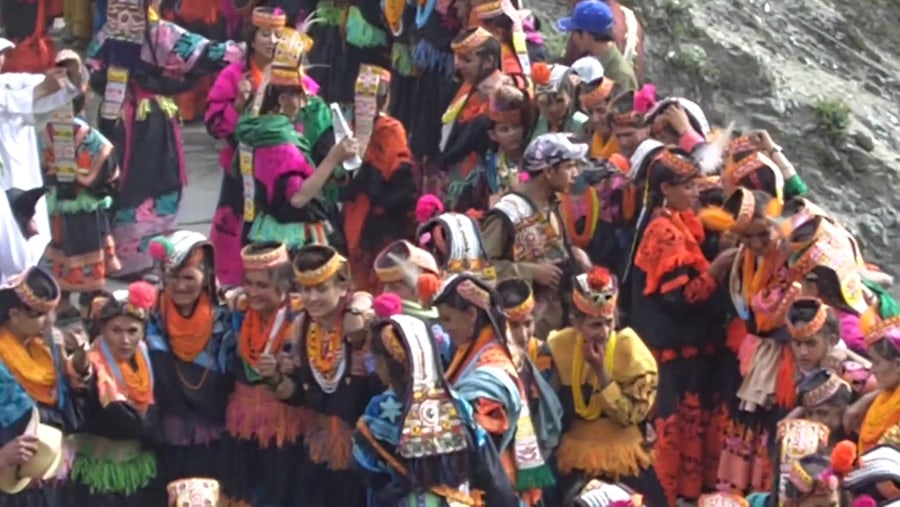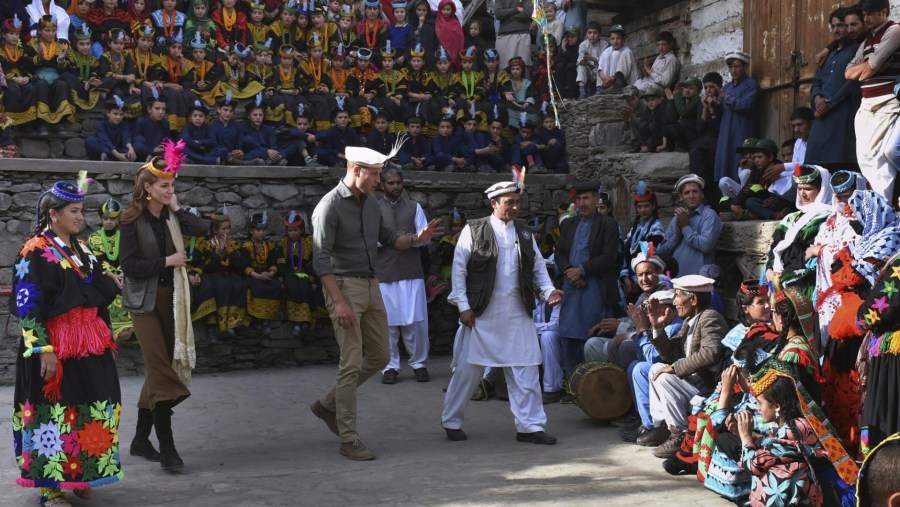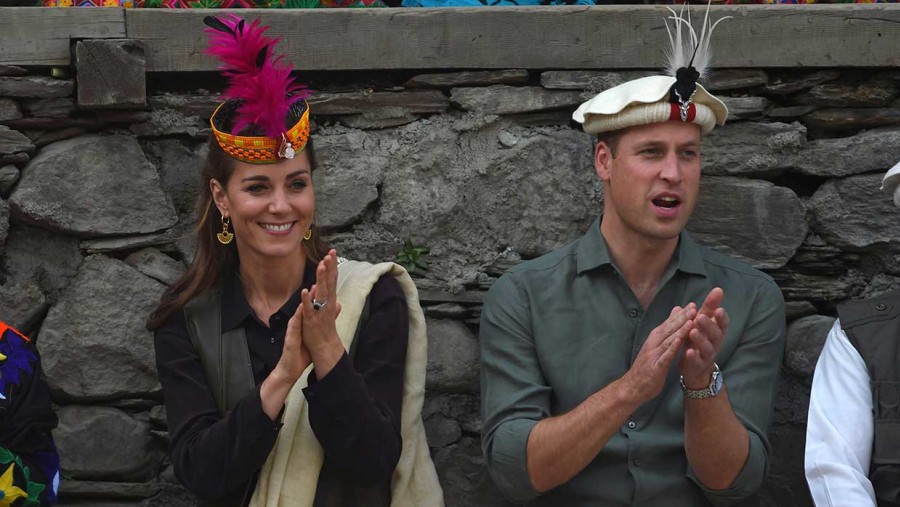Enjoy Chilum Josh Festival In 15-Day Tour Of Northern Pakistan's Highlights
Description
Embark on a tour from Islamabad to Kalash to enjoy the Kalash Festival Celebrations. Admire the lush green valley of Phandar, hike to Baltit Fort and also visit Altit Fort before enjoying the view of Rakaposhi. Boat at Attabad Lake, see the highest border of Pakistan and China along with the Satrang Lake.
Highlights
- Soak in the view of Rakaposhi, Diran Peak, Golden Peak
- Do boating at Attabad Lake in the heart of Karakoram
- Enjoy the highest border of Pak China
- Hike to 700-year-old Baltit Fort
- Experience the festival of Kalash
Itinerary Expand All Collapse All
-
Day 1: Welcome to Pakistan expand_more
Meet at Islamabad airport & drive to the hotel.
If time allows, visit Islamabad.
Dinner & night stay.
-
Day 2: Islamabad to Chitral expand_more
Eat early breakfast & drive toward Chitral via Dir Chakdara & Malakand.
Eat lunch en route.
After lunch, drive to Ayun Chitral via Lowari Tunnel with your Pakistani tour guide.
Arrive at Ayun Fort for dinner & night stay.
-
Day 3: Ayun to Bumberat Kalash expand_more
After breakfast, go on a jeep drive to Bumberat Kalash.
Arrive at Kalash valley for lunch & visit the locals.
Dinner & night stay.
-
Day 4: Festival Day expand_more
Eat breakfast & join the locals for festival celebrations.
Savour lunch & visit the valleys of Kalash.
Dinner & night stay.
-
Day 5: Kalash to Mastuj expand_more
Wake up for breakfast & drive to Mastuj valley via Boni.
Stop for lunch en route.
Arrive at Majtuj Valley.
Dinner & night stay.
-
Day 6: Mastuj to Phandar expand_more
Rise for breakfast & drive to Phandar via the world's highest polo grounds (Shandur Polo Ground).
Halt for lunch en route.
Arrive at Phandar valley.
Dinner & night stay.
-
Day 7: Phandar Valley Excursion expand_more
Eat breakfast & visit the lush green valley of Phandar, Gupis Phnadar Lake, and Khatli Lake.
Dinner & night stay.
-
Day 8: Phandar to Hunza expand_more
After breakfast, drive to Hunza via the Karakoram range.
Arrive at Gilgit for lunch.
After lunch, drive to Hunza via Karakoram Highway.
Stop at Old Silk route point & at Rakaposhi Peak 7788m viewpoint.
Drink tea & drive to Hunza Valley.
Arrive at Hunza valley for dinner & a night stay.
-
Day 9: Hunza Valley Excursion expand_more
Rise for breakfast & do a soft hike to 700 years old Baltit Fort for a guided tour of the Fort.
After Baltit, drive to another 1000-year-old Altit Fort.
Eat lunch & go to Duikar for the birds-eye view of Hunza Valley.
Enjoy the best view of Rakaposhi, Diran Peak, Golden Peak, Rush Pari Peak, Ultar Peak & Ladyfinger Peak.
Drive back to the hotel for dinner & a night stay.
-
Day 10: Hunza to Gojal expand_more
Enjoy breakfast & drive to Gojal valley.
Do boating at Attabad Lake in the heart of Karakoram.
Arrive at Gulmit for lunch.
After lunch, visit Hussaini suspension bridge, Borith Lake & Passu corns.
Dinner at local house & night stay at Passu village.
-
Day 11: Pak China border expand_more
Proceed for breakfast & drive to Pak China border via KKH & Sost valley.
Enjoy the highest border of Pak China.
Drive back to Sost for lunch & drive back to Hunza valley.
Dinner & night stay.
-
Day 12: Hunza to Naltar and Gilgit expand_more
Rise for breakfast & drive to Naltar Valley.
Visit the Satrang Lake.
Savour lunch & drive to Gilgit.
Arrive at Gilgit for dinner & night stay.
-
Day 13: Gilgit to Besham expand_more
Go for breakfast & drive to Besham via KKH.
Halt for lunch en route.
Arrive at Besham for dinner & night stay.
-
Day 14: Besham to Islamabad expand_more
After breakfast, drive to Islamabad via Swat valley Shangla Pass.
Halt for lunch en route.
Arrive at Swat for lunch & after lunch, drive to Islamabad.
Land in Islamabad for dinner & night stay.
-
Day 15: Departure expand_more
Savour breakfast & get dropped off at the airport.
Fly home.
What's Included
Meals: Breakfast, Lunch & Dinner
Transportation with fuel & toll Taxes
Licensed & professional Pakistani tour guide
All areas entry tickets
Accommodation on twin sharing
Jeeps for Kalash valley
Airport pick & drop
Invitation letter for visa process if needed
What's Excluded
Domestic & international airfare
Tips anywhere at any time
Local wine at Kalash valley
Any extras in the hotel
Laundry
Know before you go
Kalash Festival of Choimus
The Kalash Valleys of Rumbur, Bunboret and Birir are within Chitral in the North-West Frontier Province, near Nuristan in Afghanistan. The people here are some of the only non-muslims for hundreds of miles. The Kalash worship the many gods of Kafiristan like Balmain, the heroic demi-god of the Kalash whom the Choimus Festival celebrates.
Festival Essentials
Where: Kalash Valleys, Chitral, North-West Frontier Province, Pakistan
When: Mid December
Happenings: Dancing, food, chanting and prayers to the Balmain spirit
Remember to Bring: Your own goat for the ritual slaughter ceremony
Who are the Kalash?
The Kalash Valleys of umber, Bunboret and Birirare within Chitralin the North-West Frontier Province, near Nuristan in Afghanistan. The people here are some of the only non-muslims for hundreds of miles. The Kalash people are a little wary of strangers, but likely to welcome a foreigner more than the curious tours of townie Pakistani groups.
The 3000 remaining Kalasha of the valleys lives in unique houses made of local stone and wood which are stacked on top of one another against the hills so the roof of the lower house is the veranda of the upper. They make their living with staple crops like lentils and wheat and goat herding. Life is very traditional and, like in many in this part of the world, the division between men and their women is great. Family life, cattle herding and harvesting form their main livelihood with the occasional distraction of a festival or two. Women move into aBashlenihouse during birthing and also when they are menstruating. Many aspects of the society are both communal and segregated and, typically, marriages are by arrangement.
Origins and History of Kafiristan
They believe they are originally from slim, although no one yet knows where that is. It is more likely they are descendants of Indo-Aryans from 2000 BC, they claim to be direct descendants of Alexander the Great from 400 BC. The locals derogatively call them the black kafirs and the Chitral locals pushed the tribes further and further into the hills where they have now settled and their numbers rapidly dwindled.
Their region ofKafiristanwas divided by the British in 1893 and those who were in Afghanistan were mainly slaughtered or forced to convert to Islam by Afghan’s Amir. The remaining Kalash are the last remnants of the pre-Islamic culture of Kafiristan, what Muslims called ‘land of the unbelievers’.
The Oppression of the Kalash
The Kafir culture conflicted with Islam with its’ love of ornate wood carvings, wine and livestock and violent attempts to convert the region took place during the 19th century. The Kalash survived the bloody slaughter as Chitral was a region governed by the British who offered some protection.
Nowadays, the official Pakistan government line is of ethnic tolerance, but still, the Kalash people are subjected to constant racism and taunts. Their traditional way of life is also under threat from tourism and the industrial development of the valley by wealthy Pakistan corporations whose rubbish and sewage are polluting the Kalash water supply. They live on subsistence farming and food shortages and limited grazing forest land as a result of deforestation is a constant problem.
Whether enforced or not, the constant pressure to assimilate with Muslim and Pakistan culture is a pressure constantly on the Kalash people. In poor economic times, many Kalash is forced to convert to Islam and leave the tribe to go in search of work. Muslim tourists are known to abuse and leer at the Kalash women who do not cover their heads and some women have been forced into prostitution. Now, many families are divided by religion with less full-blooded Kalash remaining, although the numbers of the tribe are thought to be on the increase.
Beliefs and Celebrations
The Kalash are infamous for their festivals; these folks know how to let their hair down in style. There is much dancing where the elders chant legends with drum accompaniment and the women dance around outside. Locally brewed mulberry wine is drunk in copious quantities, although the festival dates are rarely set in stone as they depend on the harvest so if you’re running short of time you may be disappointed.
The festival of Joshi is for spring harvest and lasts 4 – 6 days in Mid May and the Uchao festival on 20th August celebrates the pre-harvest with cheese, corn and wine. The Choimusin mid-December for the winter solace is the most impressive, lasting 10 days. Non-Muslim foreigners are usually allowed to participate, but you must buy your own goat for the sacrifice!
The Kalash worship the many gods of Kafiristan like Balmain, the heroic demi-god of the Kalash whom the hommus Festival celebrates. Balmain's spirit is said to pass through the valley counting the people of the Kalash and collecting their prayers returning them to Tsiam, the mythical land of the Kalash.
What Happens at the Choimus Festival?
Much dancing in giant circles around bonfires and chanting in mesmerising repetitions – with just a drum beat accompanying the voices. The girls wear intricate costumes with dresses made of cowry shells, coins and beads with intricate hair braiding and headwear. The heavy headdress weighing several pounds is presented to the girl by her uncle. Other jewellery includes necklaces made from apricot kernels, a traditional gift during Choimus. Women often paint their faces with ink (replacing earlier customs of facial tattooing). Single woman is expected to find themselves a husband during these festivals.
Just before the main festival, seasonal foods are offered to the ancestral spirits and Kotik, light for the ancestors, is lit. After this ritual, the food, considered impure, is offered to the elderly women to be eaten.
During the festival, purity is paramount and celibacy is enforced throughout the days of the event so all the people will be in pure mind when Balmain visit the valley. All the people must be cleansed in ritual bathing the week before the festival begins. During the men’s purification ceremony, they must not sit down at all during the day and at night the blood of a sacrificed goat is sprinkled on their faces. A special bread is eaten cooked away from the main village which is prepared by men only during the purification ceremony. Other bread called Jaouorchoimus is prepared for the festival which is stuffed with crushed walnuts and goats cheese.
Special dance halls exist for the purpose of dancing at festivals. They are decorated with ornate carved wooden pillars and goat-like figurines. The music and dance is a performance of set songs: the Chao clapping song is the simplest song with a lilting dance, sung by the elders, with an energetic round dance and the women cry like goats. The Drajahilak songs are long and slow, sometimes one song can last up to 2 hours and it is a kind of solo and chorus using improvisation and variation techniques. The Dushak combines the styles of Cha and Drajahilak, presenting both traditional songs and new compositions. The dancing involves side-stepping, fast and rhythmic.
During the festival prayers, a procession is made to a high plateau outside of the village in Balanguruwhere the long night of dancing begins. The festivals continue for many more days moving on to different locations within the valleys.
Where to see the Choimus Festival
Bumburanteis the largest and most accessible place for a tourist to view the festivities, and there are several Muslim run hotels in the town. The PTDC hotel is best to avoid as the Kalash people believe it is responsible for the toxic pollution of the valley.
Cancellation Policy
For cancellations upto 2 days before the tour -
Refund of 80% of the tour price.Price Details
| Adult | |
| 1 To 1 | USD 5000 Per Person |
| 2 To 5 | USD 3000 Per Person |
| Child | |
| 1 To 4 | USD 1500 Per Person |
This is a group tour | |












